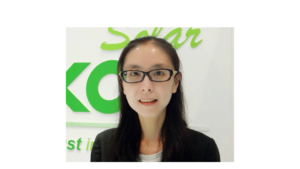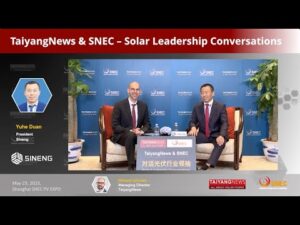Bifacial technology has solidified its position as a leading technology of choice in utility-scale PV applications. The collection of rear-side irradiance is the easiest and the most profitable way to boost PV system performance. Leading manufacturers now offer a wide range of bifacial products with impressive bifaciality ratings of up to 90%.
Optimizing system design is crucial to reaping the benefits of bifacial panels. Generally, slightly higher angles of about 10° more than the fixed tilt and increased module elevation of 1 to 2 m are beneficial. Additionally, tracker-optimized designs for bifacial modules significantly outperform the bifacial gains of typical fixed systems (see Fine Tuning Geometry For Optimal Efficiency).
Beyond increasing the energy yield, bifacial technology unlocks new applications like agrivoltaics, which is evolving strongly. This innovative approach enables the dual use of land, promoting sustainable food production alongside clean energy generation. Various mounting configurations are available, allowing sunlight to pass through the panels, creating a partially shaded microclimate suitable for certain crops ( see Mounting Systems And Bifacial Modules).
Bifacial is the key enabler and is also exclusive for the somewhat unique orientation of the vertical East-West configuration that is gaining prominence in agrivoltaics. While monofacial modules are ineffective in this setup, modules with high bifaciality such as HJT are preferred in such systems. The East-West orientation avoids peak midday generation, opening new economic possibilities beyond LCOE by enabling higher-value power sales. The system configuration addresses another bottleneck of PV installation – grid availability. Due to the anticyclic power generation profile, this approach enables installing 3 times higher capacity to be connected to the same grid connection point.

Optimizing Bifacial PV Plants: Key factors including site albedo, inverter and DC cable sizing, ground coverage ratio, and tracking systems are crucial for achieving optimal bifacial gain (Source: TaiyangNews).
The bifacial gain of a PV system dovetails not only with the solar panel’s bifaciality, but also with the location and the albedo of the site. It is apparent that higher albedo values result in higher energy yield. While the natural albedo is site dependent, the industry is also evaluating options to increase the albedo artificially using reflective materials. It is not without reason that so much attention is paid to evaluate the site’s albedo values (see Albedo On-site Measurements).
Albedo is a key element of energy yield prediction tools. Accurately calculating bifacial gain with these tools helps find the optimal PV system design for maximum energy production. While leading software such as PVsyst have implemented bifacial gain factors, further development is needed to account for all influencing factors like row spacing and tilt angle. Precise prediction models will be vital for optimizing system layout and maximizing bifacial technology’s potential
With nearly no bottlenecks, bifacial technology is becoming a compelling technology choice in utility applications, and opens up many new fields in the built environment too from flat rooftop systems to sound barriers. The flow diagram above summarizes key indicators of implementing bifacial technology in utility-scale power plants (see Analysis Of Irradiance And Yield Simulation Models).
This is the summary of TaiyangNews latest report on Bifacial Solar Systems 2024, which can be downloaded for free here.




